Introduction
Nestled in the heart of Jordan, the ancient city of Petra is one of the most mesmerizing archaeological sites in the world. Known for its stunning rock-cut architecture and water conduit system, Petra is often referred to as the “Rose City” due to the color of the stone from which it is carved. If you’re planning a Petra tour, prepare yourself for an unforgettable journey through history, culture, and breathtaking landscapes.
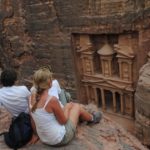
From One to Three Persons in a Modern Sedan Vehicle.
From Four to seven persons using Mini Van.
Pick and drop off to & from your hotel early morning at 07:00 AM.
Drive back to Amman after spending 6-7 hours on the site.
Drive via the desert highway to Petra.
Petra Tour Trip Itinerary
Petra Day Tour
07:00 AM Hotel Pickup & Drive Direct to Petra By Desert Highway.
10:00 AM Arriving in Petra & starting of Petra tour.
17:00 Drive Back to Amman.
20:00 Reach Amman / Hotel Drop Off.
Petra Tour Inclusions
English Speaking driver.
Modern private Car with AC including gas
(Sedan for 3 Persons – H1 Van for 4-7 Persons).
Hotel Pick-up and drop-off.
Petra Tour Exclusions
Petra Entry Fees.
Tips.
local tour guide.
Travel Insurance.
Meals and Drinks.
Any Things not mentioned are not included.
Petra Tour Note
Driver/Tour guide (around 10% Total Charges) Tips Recommended.
Petra Entrance Fee 50 JOD Per Person.
Lunch in Petra Cost around 10 – 12 JOD.
Petra TourPhoto
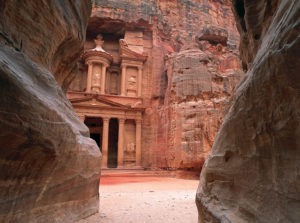
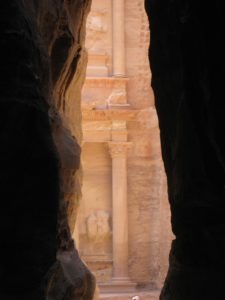
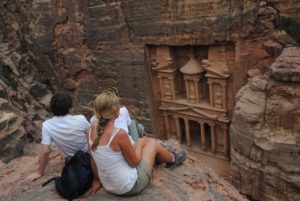
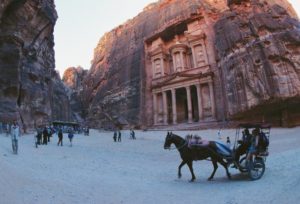
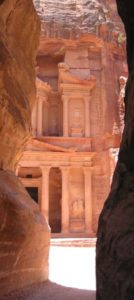
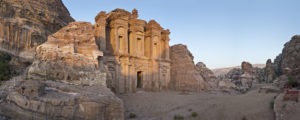

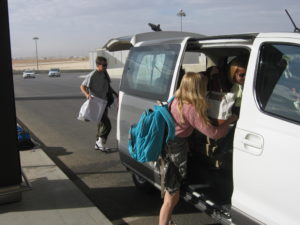
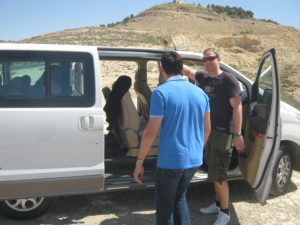
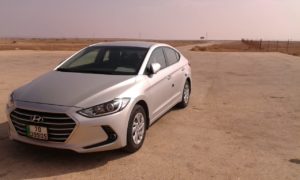

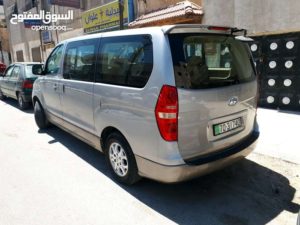

Start From Amman.
From One to Three Persons in a Modern Sedan Vehicle.
From Four to seven persons using Mini Van.
Pick and drop off to & from your hotel early morning at 07:00 AM.
Drive back to Amman after spending All Day in Petra.
Petra By Night start at 8:00 PM.
Drive via the desert highway to Petra.
Petra Tour Trip Itinerary
07:00 AM Hotel Pickup & Drive Direct to Petra By Desert Highway.
10:00 AM Arriving in Petra & starting of Petra tour.
10:00 PM Drive Back to Amman.
01:00 AM Reach Amman (Late night) / Hotel Drop Off.
Petra Tour Inclusions
English Speaking driver.
Modern private Car with AC including gas
(Sedan for 3 Persons – H1 Van for 4-7 Persons).
Hotel Pick-up and drop-off.
Petra Tour Exclusions
Petra Entry Fees.
Petra By Night Entry Fees.
Tips.
local tour guide.
Travel Insurance.
Meals and Drinks.
Any Things not mentioned are not included.
Petra Tour Note
Driver/Tour guide (around 10% Total Charges) Tips Recommended.
you can show Jordan Pass in the Main Entrance
or you can Ticket From The Main Entrance
Petra Entrance Fee 50 JOD Per Person.
Petra By Night Entrance Fee 21 JOD Per Person.
Petra Tour Photo








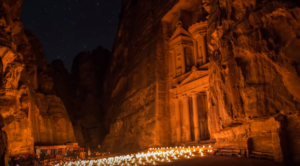

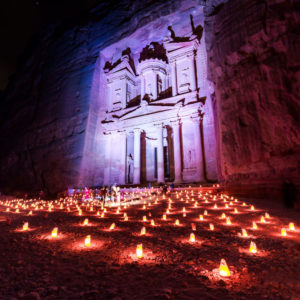
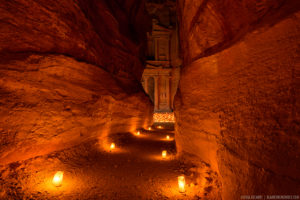

Start From Amman.
From One to Three Persons in a Modern Sedan Vehicle.
From Four to seven persons using Mini Van.
Pick and drop off to & from your hotel early morning at 08:00 AM.
Drive back to Amman Second Day after spending 6-7 hours on Petra.
Drive via the Kings Highway to Petra.
The Tour includes visiting Madaba – Mount Nebo – Karak Castle And More.
Petra Tour Trip Itinerary
Petra Day Tour
08:00 AM Hotel Pickup & Drive Direct to Petra By Kings Highway.
Stop to visit 2 Church in Madaba – Mount Nebo – Karak Castle and More depending on The time.
17:00 Arriving in Petra
17:00 Drive Back to Amman Second Day.
20:00 Reach Amman / Hotel Drop Off.
Petra Tour Inclusions
English Speaking driver.
Modern private Car with AC including gas
(Sedan for 3 Persons – H1 Van for 4-7 Persons).
Hotel Pick-up and drop-off.
Petra Tour Exclusions
Petra Entry Fees.
Tips.
local tour guide.
Hotels.
Travel Insurance.
Meals and Drinks.
Any Things not mentioned are not included.
Petra Tour Note
you have to book your Hotel in Petra By Yourself.
Check The Recommended Hotels in Petra on The Same Page and you can feel free to book your Hotel By Your self.
Driver/Tour guide (around 10% Total Charges) Tips Recommended.
Petra Tour Photo











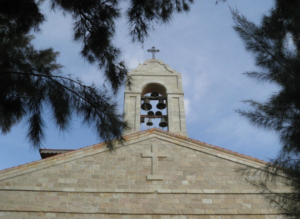


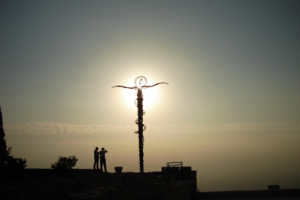
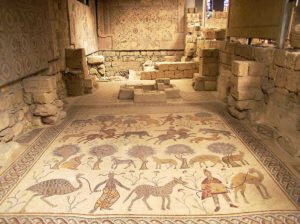

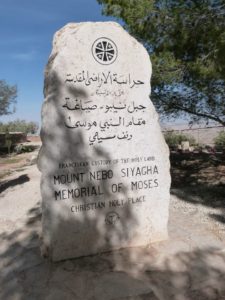
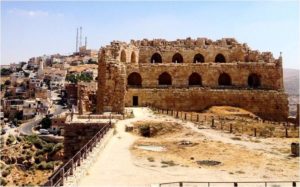
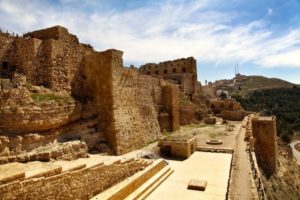

| From | To | Used Road | Time (Hour) |
| Amman | Petra | Desert Highway | 3 |
| Amman | Petra | Dead Sea Highway | 4 |
| Amman | Petra | King Highway | 6 – 7 |
| Madaba | Petra | Desert Highway | 3 |
| Madaba | Petra | Dead Sea Highway | 4 |
| Madaba | Petra | King Highway | 5 – 6 |
| Dead Sea | Petra | Desert Highway | 4 |
| Dead Sea | Petra | Dead Sea Highway | 3 |
| Dead Sea | Petra | King Highway | 5 – 6 |
| Wadi Rum | Petra | Desert Highway | 2 |
| Aqaba | Petra | Desert Highway | 2 |
| Queen Alia Inter National Airport | petra | Desert Highway | 3 |
| Queen Alia Inter National Airport | petra | Dead Sea Highway | 4 – 5 |
| Queen Alia Inter National Airport | petra | King Highway | 7 – 8 |
| Jerash | Petra | Desert Highway | 4 |
| Jerash | Petra | Dead Sea Highway | 4 – 5 |
| Jerash | Petra | King Highway | 7 – 8 |
The Siq is the main entrance to the ancient Nabatean city of Petra in southern Jordan. Also known as Siqit, the main entrance in Petra is a dim, narrow gorge that winds its way approximately 1.2 kilometres and ends at Petra’s most elaborate ruin, Al Khazneh.
Petra Tour
The entrance to the Siq contains a huge dam, reconstructed in 1963 and again in 1991, designed to bar the mouth of the Siq and reroute the waters of Wadi Musa. The dam is a fairly true reconstruction of what the Nabataeans did to control Wadi Musa between the 1st century BC and the beginning of the 1st century AD. The entrance also contains the remnants of a monumental arch,
but the two abutments and some hewn stones of the arch itself have survived. The arch collapsed in 1896 following an earthquake, but its appearance is known from the lithographs of Matthew Boulby and David Roberts.
Petra Tour
The Siq is used as the grand caravan entrance into Petra. Along both walls of the fissure are a number of votive niches containing baetyl, which suggest that the Siq is sacred to the Nabatean people. In 1998, a group of statues were uncovered when digging was conducted to lower the road by more than six feet. Although the upper part is greatly eroded, it is still possible to recognise the figures of two merchants, each leading two camels. The figures are almost twice lifesize.
Petra Tour
Along the Siq are some underground chambers, the function of which has not yet been clarified. The possibility that they were tombs has been excluded, and archaeologists find it difficult to believe that they were dwellings. The majority consensus is that they housed the guards that defended the main entrance to Petra.
Al-Khazneh is one of the most elaborate temples in Petra, a city of the Nabatean Kingdom inhabited by the Arabs in ancient times. As with most of the other buildings in this ancient town, including the Monastery, this structure was carved out of a sandstone rock face.
Petra Tour
Al-Khazneh was originally built as a mausoleum and crypt at the beginning of the 1st century AD during the reign of Aretas IV Philopatris.
Its Arabic name Treasury derives from one legend that bandits or pirates hid their loot in a stone urn high on the second level. Significant damage from bullets can see it on the urn. Local lore attributes this to Bedouins, who are said to have shot at the urn in the early 20th century, in hopes of breaking it open and spilling out the “treasure”—but the decorative urn is in fact solid sandstone. Another legend is that it functioned as a treasury of the Egyptian Pharaoh at the time of Moses (Khaznet Far’oun).
Petra Tour
Many of the building’s architectural details have eroded away during the two thousand years since it was carved and sculpted from the cliff. The sculptures are thought to be those of various mythological figures associated with the afterlife. On top are figures of four eagles that would carry away the souls. The figures on the upper level are dancing Amazons with double-axes. The entrance is flanked by statues of the twin’s Castor and Pollux who lived partly on Olympus and partly in the underworld.
Petra Tour
In 1812, the city of Petra and Al-Khazneh was rediscovered by Swiss explorer Johann Ludwig Burckhardt. As Western Europe continued to explore the Middle East, tourism became more common, and by the 1920s, a small hotel had opened near Petra. While Petra was not as popular as larger, more central cities Likewise like Cairo, tourism started to change the economy and social structure of the Bedouin people who lived nearby.
certainly, tourism is the main source of income in Jordan. Hotels, souvenir shops, restaurants and horse rental services are all found within a few mile radii of Petra itself. While the economic effects have been largely positive, the site itself faces threats from increased tourism.
Petra Tour
Humidity from large crowds of people visiting the site can cause damage to the dry sandstone. White spots have appeared on walls and columns from stearic acid deposition due to hands resting against the walls. The Khazneh surface itself has receded by 40mm in less than ten years from touching, leaning, or rubbing on the walls of the Khazneh.
Petra Theater is a first century AD Nabataean theatre situated 600 m from the centre of Petra. A substantial part of the theatre was carved out of the solid rock, while the scene and exterior wall were constructed. The theatre’s auditorium consists of three horizontal sections of seats separated by passageways and seven stairways to ascend. The theatre could accommodate a number of approximately 8500 people, more than the estimated number of Amman theatres. Petra Theater follows similar architectural patterns of Roman theatres, which enhances superior acoustics.
Petra Tour
The theatre was built in the cultural and political apex of the Nabataean kingdom under Aretas IV (9 BC-40 AD), where large scale civil construction projects in Petra and other important Nabataean trading cities in Hijaz and the Negev took place. It is said that the theatre-building activities of Herod the Great may have urged the Nabataean king to follow the lead. The massive theatre with its large capacity positioned to bring the greatest number of tombs within view.
Petra Tour
Although Roman in design, being carved out as opposed to being built is characteristically distinctive Nabataean style and not a Roman manner. The floral capitals of the theatre are also distinctively Nabataean artistic element. Minor alterations of the theatre were made by Aretas son Malichus II and later on the Romans who re-built the exterior wall. Reference
The Qasr al-Bint is a religious temple in the Nabataean city of Petra. It faces the Wadi Musa and is located to the northwest of the Great Temple and to the southwest of the Temple of the Winged Lions. One of the best-preserved of the ancient structures surviving in Petra today, it stands near the monumental gate and was a key focal point on the collonaded street, as well as a focus of religious worship
Petra Tour
The full modern Arabic name of the ruin is Qasr al-Bint Fir’aun, or “the palace of Pharaoh’s daughter.” This name derives from a local folktale according to which the virtuous daughter of a wicked Pharaoh determined to decide between her suitors by setting them the task of providing a water supply for her palace. Two suitors completed the task simultaneously by directing water to the palace from different springs in the hills surrounding it. The princess accepted the more modest of the two suitors who ascribed his success to God.
Petra Tour
The deity to whom the Qasr al Bint dedicated has been a source of scholarly debate. The temple faces north towards a sacrificial altar that dedicated to Dushara, the main Nabataean deity, and due to this spatial connection, it has been suggested by some scholars that it also Dushara who worshipped at the Qasr al-bint A Greek inscription in the chamber to the east of the cella suggests that Zeus Hypsistos may also have received devotions at the Qasr.
Others have suggested that the presence in the cella of a baetyl stone fragment, which originally would have been placed on a base faced with gold, indicates that it was actually Al-Uzza, equated with the Greek goddess Aphrodite, that worship here Healey, who is considered one of the main authorities on Nabataean religion, believes that the Qasr may be the Temple to Aphrodite that is referred to in the Babatha correspondence, a cache of documents that were hidden in a cave at the time of the Bar Kokhba Revolt.
Petra Tour
The Qasr al-Bint sits upon a podium made of a rubble core retained by courses of ashlar masonry. The temple itself is also constructed of ashlar blocks. Access to the temple is provided by a monumental marble staircase of 27 steps, which is divided by a landing. The plan is square and consists of a pronaos (or vestibule), a naos (or chamber), and a tripartite adyton which contains the cella, the most sacred part of the temple.
Also, The vestibule was originally framed by four columns with Corinthian capitals. None of these columns remains to stand, but fragments of the capitals have been found[1]. There are additional chambers on either side of the cella[6]. These two chambers originally had upper rooms that could be accessed by staircases concealed in the building’s thick walls[1][6]. Both the interior and exterior walls were originally covered in decorative plasterwork, some of which is still extant [3]. Wooden-string courses line the lengths of the walls, and wooden wedges can still be found between some of the stones[4]. The wood used in the structure has been identified as Lebanese Cedar.
Petra Tour
The chronology of the Qasr al-Bint debate for decades. so It appears that the current structure was built on the remains of an earlier poorly understood monument [4]. Pottery fragments recovered from the base of the structure have been dated to 50-30/20 BCE[4]. Dates have been suggested for the current building ranging from the first century BCE to the end of the first century CE[1]. Radiocarbon dating of the remaining wood from the site, which did in 2014, indicates that the structures have a terminus post quem (earliest possible date for construction) at the beginning of the first century CE.
This date is supported by the similarities between the architectural decoration of the Khazneh, which has been firmly dated, and that of the Qasr al-Bint[4]. Stylistically, buildings of this date have intricate mouldings and capitals with fine floral motifs, both of which have been found at the Qasr al-Bint [7]
Secondly, the phase of construction dating from 106 CE to the late third century CE is also attested based on the presence of inscriptions, coins, and pottery.[1].
At some point, probably during the Palmyrene revolt of 268-272 CE, the Qasr al-Bint vandalized and burned. It later occupied and looted for building materials during the Medieval period[1].
During the Medieval period, a ramp was constructed in front of the temple using architectural fragments and column drums from the structure itself. It is believed that the ramp was placed there in order to allow for the removal of some of the stones, which were then reused in other structures.
Petra Tour
The Qasr al-Bint is one of the few ancient built structures that remain standing in Petra. This is in spite of the fact that ashlar masonry, which is used in its construction, is vulnerable to damage by ground vibration during earthquakes. The symmetrical plan of Qasr el-Bint may have helped to reduce the moments of torsion that occurred during a seismic activity at the site, however. The use of wooden string courses may also have enhanced the energy dissipation capacity of the structure. Some scholars believe that it is due to the inclusion of these wooden-string courses that the building is still standing at its full height.[6] Reference.
This derived its name from the jar that crowns the pediment. so It was probably constructed around 70 AD. It is preceded by a deep courtyard with colonnades on two sides. High up in the facade there are 3 niches that give on to small burial chambers, but which adapted in 446 AD to serve as a Byzantine church.
Petra Tour
The so-called Great Temple at Petra is a grand monumental complex that lies south of Collonaded Street at Petra. It covers an area of ~7,560 m2. The complex was probably completed in the early first century CE, under the rule of Nabataean king Aretas IV, as suggested by architectural and sculptural details.
Petra Tour
The “Great Temple” occupied a prime spot in ancient Petra: from its ruins, one can now see the Siq to the Southeast, the Qasr al-Bint to the West, and the Lower Market/Petra Pool Complex to the East. It is unclear whether the complex is a religious or administrative building, and—if it is indeed religious—how exactly it functions or to what deity it is dedicated.
Petra Tour
In the 1890s, the ruins were superficially explored by German archaeologists R. E. Brünnow and A. von Domaszewski[1]. Walter Bachmann then surveyed Petra as a member of the Preservation branch of the German-Turkish army; also, he was the first scholar to identify the monument by its current name in his 1921 revision of the Petra city plan[2]. Martha Sharp Joukowsky of Brown University initiated archaeological excavations in 1993, and her team’s research has informed the bulk of scholarly interpretations[3].
Petra Tour
The “Great Temple” is a rectangular complex aligned on a Northeast-Southwest axis.
From the collonaded street, one ascends about ~8m up a flight of stairs that is about 17m wide into the Propylaeum. This monumental stairway was altered both immediately after the building of the Great Temple and during the construction of Collonaded Street in ca. 76 CE (Joukowsky 2001, p. 44). The Propylaeum and street sit at ~8m under the Lower Temenos, which itself is 6m beneath the Upper Temenos and the bulk of the temple. The “temple” proper lies immediately south of the Upper Temenos.
Two exedrae (semicircular recesses with benches) lie to the east and west of the monumental stairway that joins the Lower and Upper Temenos. The temple itself was built with four frontal columns stuccoed in red, yellow, and white for a stark contrast against the sandstone environment, and would hypothetically have stood at 20m.
Similarly, a height is comparable to that of the Qasr al-Bint’s current 23m, but not as grand as the Khazneh/Treasury, whose facade reaches 39m (Jarus 2012). A theatre, likewise as a structure (theatron) with about 600 seats, dominates the interior of the temple beyond the Upper Temenos, where traces of extensive decoration remain in gold leaf and coloured stucco.
Petra Tour
Water management also plays a significant role in the architecture of the “Great Temple,” as two sizable cisterns of 59m3 and 327m3 (approximately 59,000 and 327,000 litres’ capacity respectively) have been found. The cisterns feed into a subterranean canalisation system, which runs the length of the temple and then joins the citywide water distribution system.
So these channels may then have led to the Qasr al Bint and Wadi Siyagh.
Petra Tour
Even before systematic excavation, carved architectural fragments (debris from earthquakes) were scattered around the precinct.
Among the most spectacular finds discovered during excavation are two largely intact elephant-headed capitals, with four heads in place of an Ionic capital’s volutes. These were found near the Lower Temenos in 2000, with 328 fragmented elephant-head elements found in total (Joukowsky 2001, p. 47). In addition to the capitals, excavators found eight limestone relief panels depicting male and female busts, speculatively identified as about Apollo/Ares, Aphrodite/Amazon, Tyche/Fortuna, and others
Other finds included lamps, coins, Roman glass, ceramic figurines and vessels, with multiple Corinthian acanthus capitals and floral friezes. These artefacts point towards the construction of the “Great Temple” beginning in the mid-late first century BCE.
Also, Nabataean painted ceramics, painted and inscribed plaster, and a bronze plaque were recovered in the Upper Temenos.
To the southeast of the Upper Temenos, a cultic or votive figure carved in bas relief was found, rendered as holding a sword or dagger and hidden by an ashlar perimeter wall
This figure suggests that the so-called “Great Temple” may be used as a place of worship.
Petra Tour
At the centre of the discussion about the “Great Temple” is whether Bachmann’s postulation about the structure’s function as a temple is correct.
Joukowsky argues that due to the presence of a “theatre” as opposed to a canonical cella (the main chamber of a canonical Greek or Roman temple), the building cannot be repurposed to serve as a religious space.
Petra Tour
Joukowsky makes the argument that the temple proper is comparable to what Arthur Segal describes as “ritual theatres”, whose defining characteristic is a view of a notable natural or artificial feature.[1][6]
Also, as excavation has proven that the cavea (seating area) predates the stage and had existed for a time without it, allowing for spectators to look out at the Wadi Mousa, Segal’s definition may apply to the “Great Temple”.
As also happens with other religious buildings in Petra, it is unclear what deity, if any, the Nabataeans would have worshipped at the “Great Temple”. Votive figures. Likewise, the sword-carrying one to find in its southernmost passageway is common elsewhere in Petra, and may have been left by stonemasons asking deities to bless their work, or communicating their remorse at altering natural rock formations.
Petra Tour
Aniconic baetyl makes it conceivable that the Nabataeans’ principal deity Dushara or his partner Al-‘Uzzá could be venerated in this structure.
Also, some scholars foreground civic functions, examining the “Great Temple” with reference to standard Greco-Roman spaces. Likewise, the bouleuteria (council chambers) and comitium/curia (Roman political meeting place).
Petra Tour
The interpretation of the “Great Temple” as an administrative centre is arguably supported by several references to a boule or council in the extant papyri from the late 1st to early 2nd century CE Babatha archive.
Babatha was a Jewish woman whose letters have illuminated much about Nabataea and Roman Provincia Arabia, with most of the letters about transactions and legal ownership of property.
Another find that upholds the option is a Roman Imperial inscription in Latin. Likewise, dating back to the second century, it acknowledges the emperor of the time by name and titulature, and finds it in a western chamber of the temple.
Petra Tour
__
__
—–
__
___
____
__
__
___
__
___
___
___
___
___
Landline : +962 3 215 5535
Mobile : +962 79 5645707
Mobile : +962 79 066 5640
Landline : +962 3 2155599
Mobile : +962 79 5120869 , +962 777715223
Landline : +962-3-2156800
Mobile : +962 7 7731 2455
Landline: +962 3 2157500
Mobile : +962 7 7082 4824
Tel/fax (962) 3-215-5900
Mobile : +962 798888388
Mobile : +962 7 9088 2879
This wonder of the world is the most valuable treasure in Jordan, and also its main tourist attraction in the country.
A unique city sculpted on the rocks by the Nebauteus, the Arabic people who once lived in the Jordan deserts around Petra, a place that became a very important mark of the Silk route and other goods that were transported between Saudi Arabia, China, Greece, Egypt, Syria, and Rome.
Petra and as the Nabateans used to call it “Raqmu” is one of the most famous cities in Jordan due to its archaeological and architectural history. The city is also known as the Rose City due to its pink rocks formations.
Petra was established in 312 AC, and it became the capital of the Nabateans people, who were referred to in the Bible. They inhabited the region of Petra between the IV AC and II DC. Petra was also a very important commercial center between the Arabic peninsula and Damascus in Syria, and today Petra is the most visited tourist attraction in Jordan.
The Romans conquered Petra in 106 A.C, and they turned the territory into a roman province. During the second and third centuries, Petra continued to grow and in the seventh century, the Romans lost the power of Petra to Islam.
In the 12th century, Petra was once again taken by different leaders and for a while, Petra was hidden until it was found by Swiss explores Johann Ludwig Burckhardt, who was responsible to announce the city into the world with his poem “a rose-red city half as old as time.”.
In 2007, Petra was recognized as one of the Seven Wonders of the World and UNESCO described the city as “one of the most precious properties of the cultural inheritance of humanity Petra has been a UNESCO World Heritage Site since 1985.
Petra is located in the territory between the Dead Sea and the Gulf of Aqaba, in the mountains of the east side of the Wadi Araba. In the city of Petra, many ancient monuments can be found such as the Roman Theater, the Royal Tombs, and others.
The Wadi Musa, meaning the Valle of Moses, is a long valley close to many mountains where a Bedouin camp sells local handicrafts, such as pottery, accessories, and bottles with coloured sand where cars can’t be used and people walk around and rent horses, camels or a horse-drawn carriage.
In Petra, there are two museums; the Museum of Petra and the Nabataean Museum of Petra, both with ancient legacies from the excavations in the region and which expose the city’s historical past to the public.
To protect the area, vehicles are not allowed to travel there. But, if you don’t want to walk, you can rent a horse or a horse-drawn carriage to move around the Siq. Older people or those with support needs are entitled to a special authorisation, issued by the Visitors Centre (located at the entrance). The service has an extra fee to allow the carriage to enter Petra to visit the main tourist attractions.
The best time to visit Petra is during the spring and autumn months as temperatures aren’t so high. Petra is best enjoyed in the early and mid-morning sun or in the afternoon a few hours before sunset when the late sun turns the natural pink rocks into an even prettier color.
Petra has been in a few of the most famous movies in Hollywood such as Indiana Jones, Transformers 2, and it is also mentioned in the Mortal Kombat Movie.
Petra is also called the ‘Lost City’; that’s because, in spite of its being such an important city in antiquity, after the 14th century AD, Petra was completely lost to the western world.
The name Petra originates from the Greek word ‘petros’ which means rocks. Petra is also known as Al-Batra in Arabic.
Between 1BC and 8 AD, Petra experienced severe earthquakes and in 362 AD half of the city was destroyed.
It is believed that Petra was established in 312 BC which then makes the city one of the oldest cities in the world.
During 2016, while using satellite imagery, archaeologists discovered a large and previously unknown monumental structure buried beneath the sands of Petra.
Petra Tour, Petra Tour, Petra Tour, Petra Tour, Petra Tour.
Petra Tour, Petra Tour, Petra Tour, Petra Tour, Petra Tour.
Petra Tour, Petra Tour, Petra Tour, Petra Tour, Petra Tour.
Petra Tour, Petra Tour, Petra Tour, Petra Tour, Petra Tour.
Car with Driver in Jordan
All The Car with English speaking Driver.
Can Drive you
to The Following Sites in Jordan :
The magnificent landscape.
The world’s most amazing place.
Also, Car with a Driver in Jordan can Drive you to
Madaba
best known for its historic churches and centuries-old mosaics.
Mount Nebo
is one of the most revered holy sites of Jordan.
The Mujib Reserve
is the lowest nature reserve in the world.
Main Hot Springs
This oasis-style resort offers an outdoor pool and a spa.
Aqaba
The Jewel of the Red Sea.
Jerash
considered one of the largest and most well-preserved sites of Roman architecture in the world outside Italy.
Ajloun Castle
also known as Rabad Castle, is a 12th-century Muslim castle situated in northwestern Jordan.
Umm Qais
or Qays is a town in northern Jordan principally known for its proximity to the ruins of the ancient Gadara.
Qasr al-Azraq
is a large fortress located in present-day eastern Jordan. It is one of the desert castles.
We offer you to go Anywhere in Jordan, Our driver professional with Good knowledge.
our Car is Comfortable with A/C.
We Can Reach you Anywhere in Jordan, Flexibil about time.
Our Driver Can Start with you from Amman Airport – Aqaba Airport.
Our Driver Can Start with you From Allenby Bridge or Sheikh Sheik Hussein Bridge.